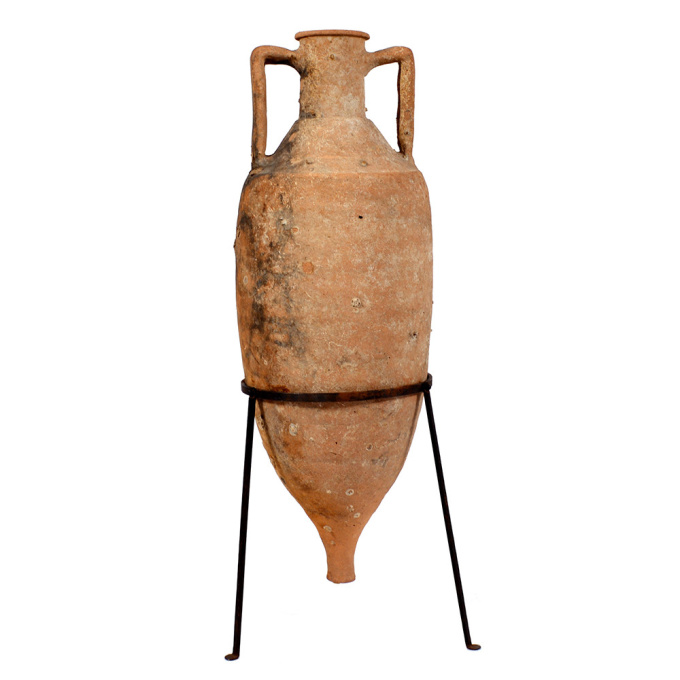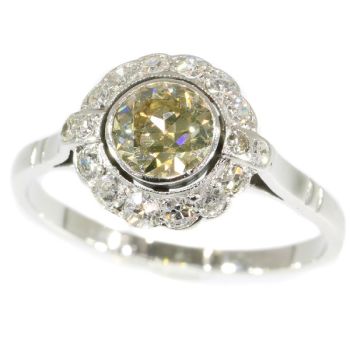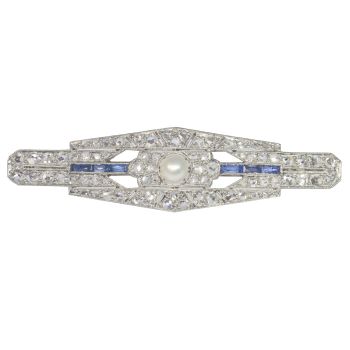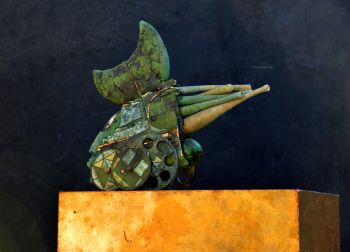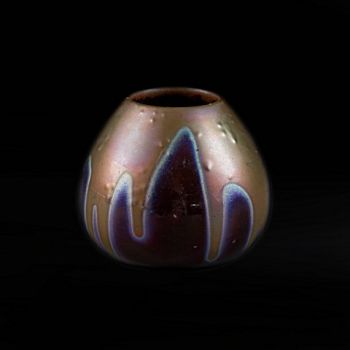A Roman shipwrecked terracotta wine transport amphora 100 BC - 100 AD
Unknown artist
TerracottaCeramic
91 cm
Currently unavailable via Gallerease
- About the artworkThis amphora type was based on prototypes from the Aegean island of Cos (Koan type). It has a simple ring-like rim with circular section, and a straight neck ending in a marked shoulder. With a cylindrical body and a solid cylindrical spike. The handles, which comprise two parallel clay shafts with a characteristic bifid section, are flexed and join the amphora immediately below the rim and on the shoulder close to its junction with the neck. With some marine encrustation to one side from long-term underwater exposure, while the other side was most likely submerged in sand and therefore protected.
The amphora is fully intact and offered including stand.
91 cm (h) Type: Dressel 2-4 Italian; Koan amphora; Peacock & Williams 10
Ex German private family collection, owned since the 1950s
The precise origin of domestic viticulture and winemaking in Rome has not been determined. Early Roman culture was sharply influenced by the ancient Greeks, which makes it likely that the Mycenaean Greeks had some influences in the Roman wine culture through early settlements in southern Italy. Because the ancient Greeks saw wine as a staple of domestic life and a viable economic trade commodity, their settlements were encouraged to plant vineyards for local use and trade. Southern Italy’s abundance of indigenous vines provided an ideal opportunity for wine production Wine had religious, medicinal and social roles that set it apart from other Roman cuisine. Wine, like in Greek culture was mixed with water, and both cultures held banquets, where wine was used to show off wealth and prestige.
As Rome entered its golden age of winemaking and the era of expansion, a “democratic” approach to wine started to emerge. Wine was increasingly viewed as a necessity of everyday life rather than simply a luxury enjoyed by the elite. It became available to slaves, peasants and aristocrats, men and women alike. The widespread planting of grapes ensued from the need to serve all classes of society, but was also given impetus by the changing Roman diet. In the 2nd century BC, Romans began to shift from meals consisting of moist porridge and gruel to those more bread-based; wine aided in eating the drier food. - About the artist
It might happen that an artist or maker is unknown.
Some works are not to be determined by whom it is made or it is made by (a group of) craftsmen. Examples are statues from the Ancient Time, furniture, mirroirs, or signatures that are not clear or readible but as well some works are not signed at all.
As well you can find the following description:
•“Attributed to ….” In their opinion probably a work by the artist, at least in part
•“Studio of ….” or “Workshop of” In their opinion a work executed in the studio or workshop of the artist, possibly under his supervision
•“Circle of ….” In their opinion a work of the period of the artist showing his influence, closely associated with the artist but not necessarily his pupil
•“Style of ….” or “Follower of ….” In their opinion a work executed in the artist’s style but not necessarily by a pupil; may be contemporary or nearly contemporary
•“Manner of ….” In their opinion a work in the style of the artist but of a later date
•“After ….” In their opinion a copy (of any date) of a work of the artist
•“Signed…”, “Dated….” or “Inscribed” In their opinion the work has been signed/dated/inscribed by the artist. The addition of a question mark indicates an element of doubt
•"With signature ….”, “With date ….”, “With inscription….” or “Bears signature/date/inscription” in their opinion the signature/ date/ inscription has been added by someone other than the artist
Artwork details
Related artworks
Unknown artist
Japanese art deco lacquervase with Scarab beetle motif1920 - 1950
Price on requestDille Art
1 - 4 / 12Unknown artist
The bell of the VOC fortress in Jaffna, Sri Lanka1747
Price on requestZebregs & Röell - Fine Art - Antiques
 Curated by
Curated byDanny Bree
1 - 4 / 13Klaas II Mobach
Hanna Mobach, daughter of the sculptor Klaas Mobach, reading1950 - 1970
Price on requestKunsthandel Pygmalion
1 - 4 / 24


